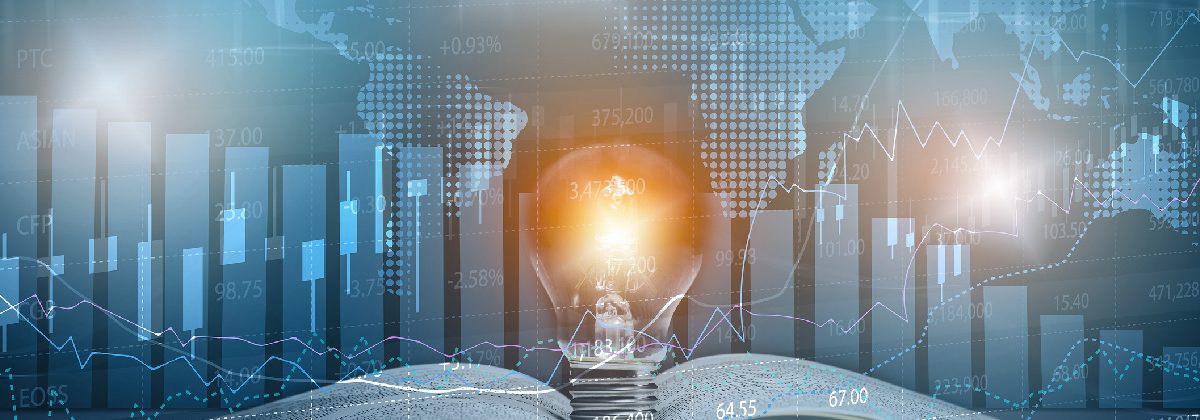Understanding Economic Cycles and Market Sentiment

On July 8, 2025, the Hang Seng index rose 1.09%, following the US announcing fresh tariffs of 25% to 40% on imports from 14 countries. The announcement gave investors hope that trade tensions are shifting away from China. The very next day, China released its PPI data for June with a 3.6% YoY decline. This deepened deflation concerns, causing the Hang Seng to fall 0.86%.
The financial markets are not static entities; they breathe, expand and contract, driven by a complex interplay of fundamental economic forces and the collective psychology of market participants. This makes understanding economic cycles and market sentiment paramount for traders. These two concepts, while distinct, are intimately linked, and recognising their influence can strengthen trading strategies and lead to more informed decisions.
The Rhythmic Dance of Economic Cycles
An economic cycle refers to the recurring pattern of expansion and contraction that an economy experiences over time. While the timing and duration of these phases are not perfectly predictable, their sequence is generally consistent. There are typically four distinct phases in an economic cycle:
- Expansion
This is a period of sustained economic growth. During expansion, key economic indicators like GDP, employment rates and consumer spending rise. Businesses thrive, corporate profits increase and, often, so do stock prices. Interest rates tend to be low, encouraging borrowing and investment. This period is often characterised by optimism and a risk-on environment.
- Peak
This is the highest point of economic growth in a cycle. At this stage, the economy is operating at or near its full capacity, and inflationary pressures might start to build as demand outstrips supply. Economic indicators level off, and a sense of caution might begin to creep into market participants’ minds as they begin to anticipate a slowdown.
- Contraction
Following the peak, the economy enters a contraction phase, marked by a slowdown in economic activity. GDP growth declines, unemployment rises and consumer and business spending decrease. Corporate earnings may fall, and the stock markets typically experience a downturn as investors become risk-averse. A severe and prolonged contraction is known as a depression.
- Trough
This is the lowest point of an economic cycle. At this stage, economic indicators hit rock bottom, and pessimism is widespread. However, it is also the point where the seeds of recovery are often sown. As prices fall and economic conditions become extremely challenging, opportunities for future growth begin to emerge.
It is important to remember that economic cycles are not always uniform. Their length and intensity can vary significantly due to a multitude of factors, including technological advancements, government policies and global events.
The Power of Market Sentiment
While economic fundamentals provide the backbone, market sentiment adds the emotional and psychological layers that often drive short-term price moves. Market sentimentis the overall prevailing attitude or mood of investors towards a particular asset, sector or the broader market. This collective psychology, driven by a mix of emotions, especially fear and greed, can sometimes override fundamental data, leading to irrational exuberance or unwarranted panic.
Now, sentiment can be bullish, bearish or neutral. When investors are optimistic and expect prices to rise, the sentiment is bullish. This often leads to increased buying activity, upward price moves and a general sense of enthusiasm. Conversely, when investors are pessimistic and anticipate price declines, the sentiment is bearish. This can trigger widespread selling, downward price moves and a focus on risk aversion. Neutral sentiment refers to when investors are uncertain about the market’s direction, leading to periods of consolidation or range-bound trading.
Multiple factors influence market sentiment, including:
News and Economic Data
Positive economic reports, such as strong GDP growth and low unemployment, can fuel bullish sentiment, while negative news, like rising inflation or corporate bankruptcies, can ignite bearishness.
Corporate Earnings
Strong earnings reports from major companies can boost overall market confidence, while disappointing results can lead to a dip in sentiment.
Interest Rates and Monetary Policy
Central bank decisions on interest rates and quantitative easing/tightening significantly impact investor confidence and risk appetite.
Geopolitical Events
Wars, political instability and international crises can introduce uncertainty and dramatically shift market sentiment.
Social Media and News Analytics
In today’s digital age, the pervasive influence of social media and news headlines means that sentiment can move due to these sources and rapidly impact market behaviour.
Trading Economic Cycles and Market Sentiment
Successfully navigating the markets requires trading strategies that acknowledge both the underlying economic cycle and the prevailing market sentiment.
Trading Economic Cycles
The expansion phase is generally a good time to invest in growth-oriented sectors like technology, consumer discretionary and industrials. As the economy expands, these sectors tend to benefit from increased consumer spending and business investment. As the economy approaches its peak, traders tend to become more cautious and shift towards defensive sectors such as utilities, healthcare and consumer staples. These industries are less sensitive to economic downturns because their products and services are always in demand.
During a contraction phase, capital preservation becomes key. Traders tend to gravitate to safe-haven assets like gold and the US dollar. While the overall stock markets decline, this phase can present long-term buying opportunities in high-quality companies that become undervalued. Finally, as the economy hits its trough and begins to show signs of recovery, traders gradually reallocate towards more cyclical sectors that benefit from an economic rebound. This could include financials, real estate and some manufacturing industries.
Trading Market Sentiment
Market sentiment can be a powerful short-term driver. While it is tempting to follow the crowd, it is best to do your research and stick to your trading strategy. Plus, market sentiment can actually indicate an impending trend reversal. For instance, when the market is extremely optimistic and price rises seem unstoppable, it might be a sign of an overextended market, ripe for a correction. Similarly, when panic grips the market and prices tumble, it could indicate a capitulation phase, often preceding a market bottom. This can present an opportunity to buy the dip.
Finally, remember to put appropriate risk management measures in place because sudden developments can cause the markets to move unexpectedly.
To Sum Up
- An economic cycle is the recurring pattern of expansion and contraction that an economy experiences over time.
- The four phases in an economic cycle are expansion, peak, contraction and trough.
- Market sentimentis the overall prevailing mood of investors towards a particular asset, sector or the broader market.
- Multiple factors influence market sentiment, such as news and economic data, corporate earnings, central bank policy changes, geopolitical developments, and social media and news analytics.
- Trading strategies must account for the phase of the economic cycle for informed asset choices and trading decisions.
- Market sentiment can indicate an impending reversal in market trends.
Disclaimer:
All data, information and materials are published and provided “as is” solely for informational purposes only, and is not intended nor should be considered, in any way, as investment advice, recommendations, and/or suggestions for performing any actions with financial instruments. The information and opinions presented do not take into account any particular individual’s investment objectives, financial situation or needs, and hence does not constitute as an advice or a recommendation with respect to any investment product. All investors should seek advice from certified financial advisors based on their unique situation before making any investment decisions in accordance to their personal risk appetite. Blackwell Global endeavours to ensure that the information provided is complete and correct, but make no representation as to the actuality, accuracy or completeness of the information. Information, data and opinions may change without notice and Blackwell Global is not obliged to update on the changes. The opinions and views expressed are solely those of the authors and analysts and do not necessarily represent that of Blackwell Global or its management, shareholders, and affiliates. Any projections or views of the market provided may not prove to be accurate. Past performance is not necessarily an indicative of future performance. Blackwell Global assumes no liability for any loss arising directly or indirectly from use of or reliance on such information here in contained. Reproduction of this information, in whole or in part, is not permitted.




